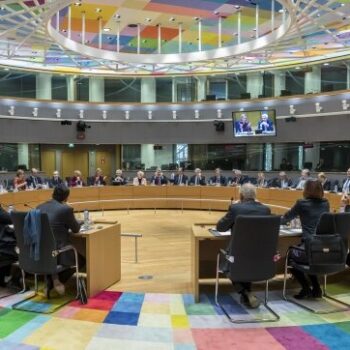Yesterday the United States released its Intended Nationally Determined Contribution (INDC), a key component of what the US will offer as part of the climate agreement in Paris later this year. The core of the INDC is a commitment to reduce emissions by 26-28% below 2005 levels by 2025.
The US team has done its homework, and while the target is achievable it won’t be a walk in the park. It will require full implementation of US domestic climate policies including the Clean Power Plan, which will put a limit on emissions of new and existing power plants, as well as meeting stringent US vehicle fuel efficiency standards. But additional reductions are likely to be needed from other sectors, such as heavy industry and agriculture. While the current offer is not enough to meet the internationally agreed goal of limiting global temperature rise to 2C, it is a step in the right direction.
Analysis from the New Climate Institute shows that enormous benefits will follow from US emission reduction efforts, including the creation of 470,000 additional jobs in the low carbon sector by 2030. Over-achieving in a way that is consistent with 2C would be even better – resulting in savings of $160bn per year and avoiding 20,000 premature deaths annually from improved air quality.[1]
Despite the claims of some US lawmakers, America is not acting alone. Europe has already submitted its INDC, as have Switzerland and Norway. In fact, most developed and developing countries are set to make contributions as part of the Paris agreement.
Mexico just became the first developing country to submit its INDC, which includes a plan to peak its emissions by 2026, and reduce its GHG emissions by 22% and emissions of black carbon or soot by 51 percent by 2030. Mexico’s INDC also has an adaptation component, including efforts to “strengthen the adaptive capacity of at least by 50% the number of municipalities in the category of “most vulnerable”, establish early warning systems and risk management at every level of government and reach a rate of 0% deforestation by the year 2030”. The INDC follows passage of a national climate change law in 2012, and low carbon growth is a key part of Mexico’s ongoing structural reforms.
Mexico and the US have also agreed to form a new high-level bilateral clean energy and climate policy task force, co-chaired by the US energy secretary and Mexican environment secretary.
The early and transparent release of INDCs shows the US and others are serious, but these pledges must be part of a broader set of measures which together establish a clear set of rules for the new global climate regime. To be considered a success, the Paris agreement will need to demonstrate that developed countries are also intent on building international resilience against growing climate change impacts and delivering finance that will redirect flows of public and private investment away from high carbon infrastructure towards efficient, low carbon and resilient options.
The G7 meeting in June is an opportunity to for the world’s largest economies to signal to developing country partners that their voices are being heard, and that Paris is a geopolitical priority.
[1] Höhne et al. (2015) Assessing the missed benefits of countries’ national contributions. New Climate Institute. Project 15005.


